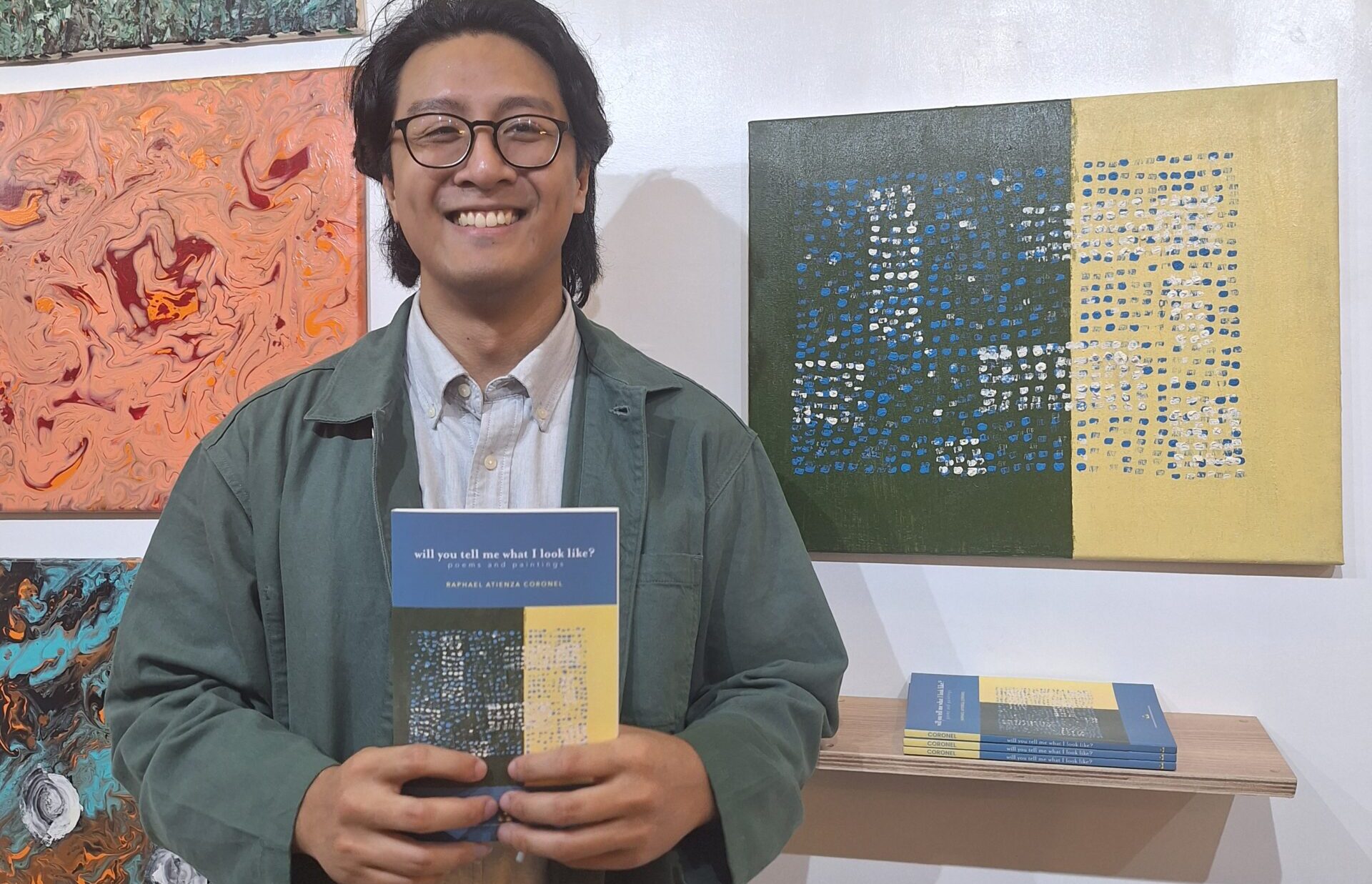The paintings were born of undeniably modern sensibilities. On the surface, they are seemingly disparate works, done in an array of colors and a complexity of brushstrokes. But they were, ultimately, crafted from the same keen essence, by the same sensitive hand.
The abstract collection of works serves as no mere accompaniment or surface-level conceit to the poetry in Raphael Atienza Coronel’s “Will you tell me what I look like?” They are as much the backbone of the book as the words themselves.
Half a year since its release in August 2023, the collection of poetry and paintings finally had its much-awaited formal introduction to the public. The University of Santo Tomas (UST) Publishing House title was officially launched at independent bookstore Everything’s Fine on Feb. 2, and is the poet-artist’s first book. Everything’s Fine also hosted an exhibit of the paintings from Jan. 27 to Feb. 9.
When asked about the interval between the book’s release and its launch, Coronel says, “I think it’s actually a good thing … because a lot of people got to live with the book first and a lot of people got to know about it before I actually talked about it … That’s something I personally wanted, for the book to have its own reputation before I said anything about it.”
A lot to say
A poetry fellow of the UST, Ateneo de Manila University and Silliman University national writers workshops, Coronel has been featured in a host of literary publications, among them Ani, under the Cultural Center of the Philippines.
While he took writing and literature electives during his undergrad years at the Ateneo, Coronel didn’t always envision a career in poetry or the arts. “I was a premed student and I did do med for one year, but that didn’t work out.”
His foray into painting is an even more recent development, having its origins, as a lot of pursuits these days once did, during the pandemic. Coronel, however, says he has always been fascinated with the art making process, especially abstract painting.
“Will you tell me what I look like?” is a byproduct of his master’s program in Creative Writing at De La Salle University (DLSU). After finding its way to CNN Philippines Life’s Top Books of 2023, it’s safe to say that the book (as well as Coronel’s work leading up to it) certainly speaks for itself—and it has a lot to say. The poet-artist dabbles in a kind of synesthesia, with the lines between poetry and painting blurring on the way to fully realized expression.
“Image-text poems are not commonplace,” says Ronald Baytan, Coronel’s master’s thesis mentor and associate professor at DLSU’s literature department. “Works that explore the relationship between the visual and the verbal have not always enjoyed a good readership in the country. Not to mention that it is costly to produce them to begin with … I cannot think of any other Filipino writer who has performed this form of modernist-postmodernist poetic practice.”
The marriage of abstract art and poetry is more than interesting in the context of the book, not least because both facets of art and literature have shared reputations for being “difficult,” as Coronel himself puts it (air quotes not optional).
More engaged
“I wanted to challenge the reader to be more engaged with the poem. Maybe they don’t understand it directly, and that might be to my own detriment, where I don’t get my point across immediately,” he says. “For my taste, it’s more realistic when people engage with someone else, like you’re meeting a person … I wanted the reader to feel like something was happening; the painting is interacting with the poem, the poem is referencing another piece of art. The reader knows that there is a conversation happening, and the collection is like an invitation to that conversation.”
“Will you tell me what I look like?” is not just a vehicle for experimenting with form and process. Readers who immerse themselves in the depths of Coronel’s language and visuals will come face to face with the quiet power of his vulnerability and his experience of his own mental health.
“I didn’t want to make mental health the forefront of the marketing of the book. That’s why I said I like that it had time to breathe because I wanted that care in the conversation of mental health … And I think in a way it’s more realistic when the poem isn’t straightforward, where it’s not giving ready-made insight because that’s not how mental health works,” Coronel says. “And to make someone understand, you kind of have to walk them through the experience of what a mental health issue is like.”
To write, to make art is to invite an audience into the intimate process of meaning-making. In asking, “Will you tell me what I look like?,” Coronel speaks directly to his audience, takes them by the hand and guides them through the ordeal of contending with the self. In so doing, the poet-artist reveals himself. He reveals his audience, too. —CONTRIBUTED INQ














































